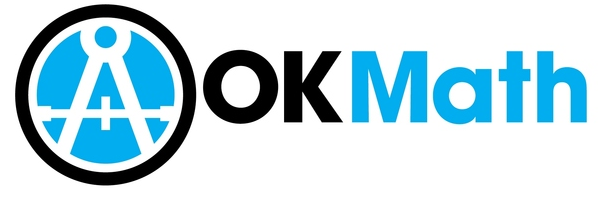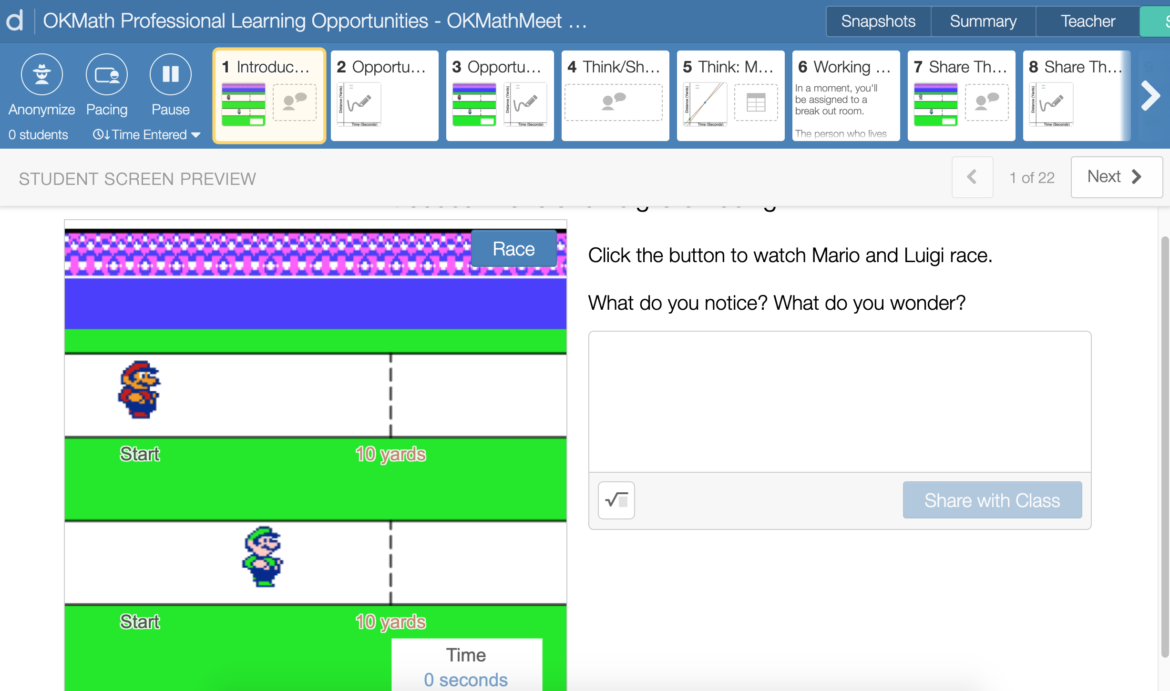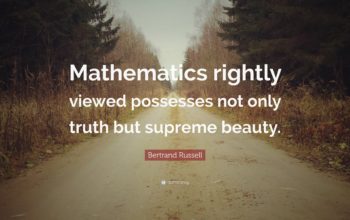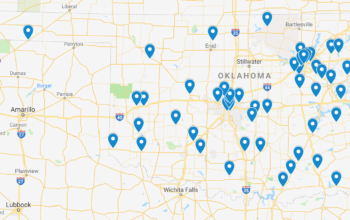STRESS. We’re all feeling it- our “to-do” list is (millions of) miles long, and with all of the disruption and last-minute changes, we’re hanging in “survival mode” whether it’s our first or fiftieth year of teaching.
What if we could alleviate some of that stress in planning our lessons for the upcoming days, weeks, and, dare-I-say, months? By anchoring our planning in producing a mathematics cycle of learning for students, we can focus on student-learning and produce ONE plan that will work for in-person, blended, or distance learning environments.
In the last OKMath Meet-Up, we walked through a sample lesson on introducing systems of equations (OAS-M: A1.A.1.3, with an option to use as an introduction to A2.A.1.8). Below, we take that same lesson and break it down using the math cycle of learning referenced in the Return to Learn: Launching Instruction for Secondary Mathematics guidance document.
Before reading this chart, it may be helpful to get familiar with:
- The Desmos Task: Super Mario Systems Races
- Learn about how to assign and monitor class activities in Desmos
- The Math Cycle of Learning referenced on pages 7 and 8 of the Return to Learn: Launching Instruction for Secondary Mathematics guidance document
- The “My Favorite No/Mistake” Strategy (article, strategy card, video)
| Math Cycle of Learning | Task Description | What the students are doing | What the teachers are doing |
|---|---|---|---|
| Introduce a rich task/challenge to students and ask them to reflect on their initial explanations or ideas for solving. | Slide 1 of the Desmos Activity asks students to identify what they Notice and Wonder about Mario and Luigi Racing. | Watching a short “race” and typing in what they notice and wonder on their own. This could be discussed as a class if in a synchronous environment to start to identify patterns and learning goals. | Observing student responses as they come into the teacher dashboard, identifying patterns in student thinking and potential misconceptions. |
| Provide students opportunities to think about the task, select a strategy, and attempt to solve. | Slides 2-5 of the Desmos Activity ask students to predict what the graph of each racer would look like, compare that prediction to the actual graph, and create equations for each graph in slope-intercept form. | Sketching graph predictions, watching the race again and seeing the actual results develop on a graph, and using the actual results to create equations on their own. | Taking Desmos Snapshots of student graphs and/or equations with misconceptions for future “My Favorite Mistake/No” activity. |
| Provide students opportunities to share their thinking with others to reinforce their thinking and gain additional ideas and evidence to support their process and/or solution. | Slides 6-12 repeat the process of slides 2-5 but with new racers. | Breakout rooms or small groups of students; one student serves as recorder (“scribe”) and only writes what their group suggests (they are allowed to coach and question before recording) | Monitoring student work on Desmos Teacher Dashboard and conferring with small groups. If 100% of instruction is asynchronous, providing feedback through Desmos comments. Instead of indicating the names of people in their group, students can respond to your feedback. |
Discuss as a class strategies for solving the task, potential solutions and “non-solutions”, and connections to other mathematical and/or real-world examples. | Slide 13 directs students back to the whole group discussion. | Students engage in whole group discussion using the “My Favorite Mistake/No” strategy. | Facilitating whole group discussion. If instruction is 100% asynchronous, consider putting snapshots of student work on this slide and ask students to reflect using guiding questions. |
| Provide students with an opportunity to reflect on their learning and demonstrate their current understanding. | Slides 14-18 repeats the process of slides 2-5 with new racers. | Students attempt again on their own, reflecting on and demonstrating their current understandings. | Monitoring student work on the Teacher Dashboard and identifying additional misconceptions, using student work to plan any Tier II or Tier III instruction (or to determine if entire class needs a “re-teach”). |
| Provide students with an opportunity to reflect on their learning and demonstrate their current understanding. (Optional Extension) | Slides 19-24 present optional extensions Slides 19-22 have three characters racing, and 23-24 allow students to type in their own rate and starting points to see the impact their choices have on the resulting graphs. | Students can be identifying patterns and making inferences about the graphs based on their data inputs. | Teachers can use this to extend learning opportunities or provide differentiation for those “mastering” the previous slides’ concepts. |
We just went through an ENTIRE cycle of learning using one Desmos activity. We can use this activity and process whether in-person or utilizing distance learning. If we are at a distance, this cycle may be broken up over a few days; if we’re in person, we may be able to complete this in one class period.
The main modifications that need to be made are for asynchronous learning; if students ONLY have asynchronous opportunities, then suggested modifications are listed in the chart and can be applied to any lesson you plan.
If students are receiving both asynchronous and synchronous learning opportunities, then opportunities to share their thinking and opportunities to discuss need to be the priorities for the synchronous learning opportunities.
View the original recording of the OKMath Meeting here. (password: sH6^@ih&)
UPDATE:
Since this post, we’ve had several OKMath Monthly Meetings geared toward using Desmos in a Cycle of Learning. Here are links to the slides and recordings to help get you started:
- Original Session: Using a Desmos Activity for a Full Cycle of Learning Recording and Slides
- OKMath Meet Up November 11: Using Desmos in a Cycle of Learning (How to set up a Desmos Teacher Account, classes, and find activities) Recording and Slides
- OKMath Meet Up December 9: Using Desmos in a Cycle of Learning (Features of the Teacher Dashboard, how to use Desmos for assessment) Recording and Slides
How are you engaging your students using a math cycle of learning? Comment or email your suggestions and questions!




